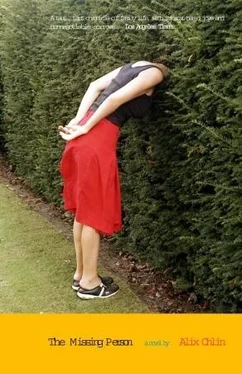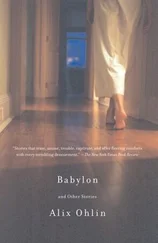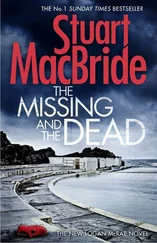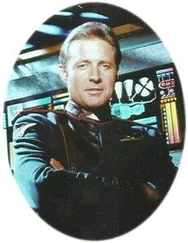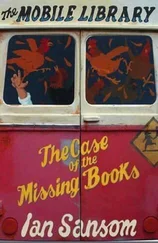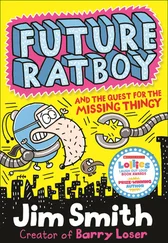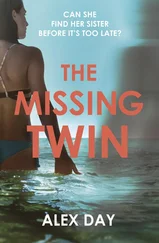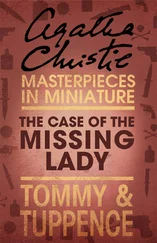“I knew an Eva once. Eva Chan. Lovely Chinese girl. Married an army fellow, I believe, and moved to California.”
In the evenings, flushed with my exertions, I met up with Angus and drank gin and tonics on the balcony of the motel or, if it was too hot, inside the room with the curtains drawn and the ice bucket sweating on the dresser. I insisted on dates and he agreed: we went dancing, to the movies, back to hear Jeanine sing her songs in the lounge. Afterwards we had sex and then I fell deeply asleep, velvet in relaxation, and never once remembered my dreams.
This went on for almost a week, after which two things happened. First of all, I found a connection to Eva Kent. And second, Angus brought Wylie and me back together again.
I was in the library looking through the annals of a Southwestern art association, rich with everything I hated about New Mexico: the parochial smallness of it, the manufacture of folk art into tourist kitsch, the white people declaiming about Navajo culture, the hippies raving about the mystical qualities of desert light. This was how an actual place turned unreal. I was getting more and more irritated, shaking my head and frowning and making little clucking sounds with my tongue. A young librarian kept passing by my table and I realized she probably thought I was deranged.
The pages of the society’s records were first yellow and typed, then purple and mimeographed, the smell of aged reproduction machines still clinging to them. There wasn’t a single reference to Eva Kent. My mind was wandering, and I’d realize after a few minutes that I had read the same paragraph four or five times.
In the sunny dusty light I turned more pages and was rewarded, finally, by the fact that the keynote address at the society’s annual meeting in 1978 was given by “local art dealer Harold Wallace,” who spoke on “The Woman Artist: No Longer an Oxymoron,” which I supposed was progressive of him. In a black-and-white photo printed six months later in the society’s newsletter, he looked like a seventies playboy, with long, feathery dark hair, a leather jacket, and a big grin. There was a touch of Peter Fonda about him, and one of his eyebrows arched higher than the other, lending his smile a rakish effect. He had been instrumental, the newsletter claimed, in bringing fame to the artists he represented — but not Eva, I thought— and exhibited at the Gallery Gecko in Santa Fe.
I went downstairs and checked the phone book. Gallery Gecko was no more, but an address and phone number were given for Harold Wallace, who to my surprise answered on the fourth ring, sounding aged and slightly sleepy, nothing like Peter Fonda at all.
“Eva. Eva Kent,” he said. “I’m not sure I remember her. Was she kind of a stout gal, blonde, came from hard-drinking German stock?”
“I’d guess she was on the thin side,” I said. “Long, dark hair parted in the middle? She made a pair of paintings, Desert I and Desert II, that belong to my family. I’m interested in learning more about her.” I was calling from a sun-blasted phone booth outside the library, and the receiver was hot and slippery in my hand.
“Well, I’m not too sure,” Harold Wallace said. “There were a lot of those girl painters around in those days. Swarming around, if you know what I mean.”
“Right,” I said.
“We had some fun parties with all those girls. Ah, yes. Good times.”
“Could you check your files or something?” I said. “It’s really kind of important to me.”
“Files,” he said softly, as if he were about to drift off into either contemplation or a nap. “I’ve got some files somewhere.”
“Maybe I could come by and take a look.”
“Well, sure you can,” he said. “Come by any time, sweet-heart.”
“How about now?”
“Persistent little thing, aren’t you?”
“I’ll be there in an hour,” I said, and hung up before he had a chance to refuse.
I sped north in the Caprice along the parched interstate, which was adorned with the shreds of blown-out tires and flowered crosses marking the scenes of car-related deaths. I passed another billboard advertising the imminent construction of Shangri-la; in this one a man and a woman, their hair blond, their jewelry gold, sat drinking white wine at a bar overlooking a golf course as expansive as a sea.
Harold Wallace lived in a well-kept adobe townhouse close to the center of Santa Fe, on a street where sunflowers and gladioli bloomed brightly next to desert plants in large pots. Every home wore a decorative ristra, a blue-tile accent, or a Kokopelli door knocker. When I rang the bell I heard him long before he got to the door, a slow rustling, and so I expected someone much more decrepit than the handsome old guy who ultimately appeared. He was wearing a long white shirt over loose-fitting gray trousers and a necklace composed of small, chunky silver beads. With thin gray hair falling to his shoulders, his skin splattered with liver spots and the occasional mole, he looked like an aging actor or a very successful guru. I was wearing shorts and a T-shirt, and for the first time since leaving New York I felt underdressed.
“Well, I realize I don’t even know your name,” he said.
The house had been decorated in tones of off-white and white, the scheme relieved by an occasional flash of beige. “Call me Harold,” he’d said, leading me to an off-white couch in a sunken living room and offering me a drink. When I requested water, he left the room and came back with a Mexican blue glass tumbler crowded with ice, lemon slices, and a matching blue straw. He kept looking, without even trying to hide it, at my breasts, and I let him, figuring it might help. I sat with the glass in one hand and my notebook in the other. Reclining opposite me in a wicker armchair, Harold flicked his thin hair over his shoulders, a weirdly girlish gesture, and asked in a broadly patronizing tone what he could do to help me with my “school project.”
“It’s my dissertation, actually,” I said, straightening up and setting my glass on a bamboo coaster. “I’m intrigued by a pair of paintings that were purchased by my father, and that have your name listed on the backing. Desert I and Desert II, they’re called, as I said on the phone, with subtitles in brackets, painted in the late 1970s.”
“And you said the name of the girl was—”
“Eva Kent.”
“Well, as I said, I don’t remember every painting I ever sold or gave away, especially not from those years. You’re too young to remember, of course, but the seventies out here in Santa Fe— well, you know. It was a good time to be alive and a man on this planet. A little too good, maybe. Sometimes things went a little bit over the top, over the edge, if you know what I mean.”
“Not really.”
“Well, maybe your father did. Sometimes paintings changed hands — well, you can see what I mean.”
I tried to picture my father flirting with girl painters, or at all, and I couldn’t even come close to imagining it. Forced to attend neighborhood parties, he’d retreat to the edges, smiling awkwardly, making the hostess and other women uncomfortable; they’d go over and start conversations on subjects he cared nothing about, sports or community activities or municipal taxes, and he’d nod and smile politely without saying anything in return. Half a drink later, all talk would wither on the vine.
“I doubt that about him,” I said. “He was kind of a straight arrow.”
“Well, you would know,” Harold said skeptically. He spent some time staring blankly at a spot over my left shoulder. His eyes were an electric shade of blue, rare and attractive, marred by bloodshot streaks. I let a moment pass, thinking he was formulating some reminiscence; but he was just sunk in silence.
Читать дальше
